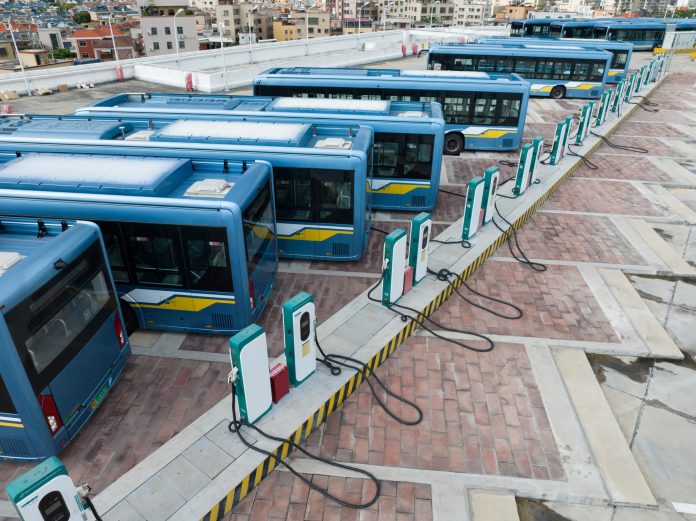Justin Coetzee, CEO and Founder of GoMetro, discusses the role of technology in urban mobility decarbonisation and alleviating regulatory compliance
Decarbonising urban mobility is a pressing challenge for fleet managers and transport operators across the United Kingdom and the European Union. As new regulations target carbon emissions, technology offers solutions to streamline compliance and optimise operations, providing a competitive edge in a rapidly evolving industry.
In recent years, both the UK and the EU have introduced a raft of legislation aimed at reducing carbon emissions associated with urban mobility.
In the UK, 2021 data shows that transport accounted for more than a quarter of its total emissions. In the EU, transport is the only sector that has not reduced its emissions since 1990. Therefore, it is under the microscope, with decisive policies being introduced to ensure that the terms of the Paris Agreement are met.
In both the UK and the EU, road emissions make up the largest proportion of transport-related emissions, so this is where the most significant focus lies. With multiple policies and pieces of legislation at play, regulatory compliance likely feels like an insurmountable task for fleet managers and transport operators. However, technology can help ease the burden and guide decision-making in three key areas.
Freight industry and urban mobility decarbonisation
Trucks and vans are an integral part of economic activity and growth. But with both the UK and the EU setting targets for reducing carbon emissions in this segment, businesses and fleet managers will have to work hard to remain compliant.
There are about 6.5 million trucks operating in the EU, and more than five million trucks and vans on UK roads, so a straight swap for EVs is not going to be quick or easy.
Also, despite good sales of vans and light commercial vehicles, it’s already clear that sales of electric variants of these vehicles are not keeping pace with net-zero targets.
It’s, therefore, important that fleet replacement runs in tandem with other reduction strategies to ensure targets are met. The question then is, how do companies and fleet managers track and reduce emissions in the meantime?
The Internet of things (IoT) is perfectly suited for emissions tracking. The technology has already established itself in the logistics sector as a way to track everything from distance travelled to tyre pressure. Devices fitted onto vehicles can provide data for route planning, engine performance, faulty equipment, and load – all of which impact emissions.
On the other side of this coin, smart cities can also use IoT devices in traffic lights and roads to track and manage traffic flow, resulting in less congestion and less pollution.
Trucks transport significant amounts of goods in agriculture, manufacturing, retail, and other sectors across the UK and Europe, so it is imperative that fleets are not interrupted by the changes and play an integral role in reduction strategies.
Buses set to be the first to decarbonise
Buses only accounted for about 3% of the UK’s transport-related emissions in 2021. But with major investment and government support through the Bus Back Better Strategy, buses are set to become the first vehicle sector to decarbonise. Data from the Society of Motor Manufacturers and Traders shows that more than four in ten new single—and double-decker buses are now zero-emission. However, the data shows that these new EVs are heavily skewed towards London, leaving rural operators struggling to catch up.
As operators introduce new vehicles into their fleets, technology can help them optimise usage, service, and decision-making. For example, an operator introducing new electric buses onto a specific route needs to understand how they are affected by a host of variables. How long can the bus travel before it needs to charge? How do traffic conditions at certain times of day impact route timing and battery life? Embracing data-driven systems like these empowers operators to manage their fleets better and optimise resources, ensuring they are getting the most value out of their investment.
Council service vehicles
The UK has set itself a target of replacing 100% of the central government’s fleet of cars and vans with zero-emission vehicles by 2027, which is estimated to be about 40,000 vehicles.
While many councils have already started replacing vehicles, data from Climate Emergency UK indicates that only 19% of UK councils have fleets containing 10% or more electric vehicles.
This shows that the task ahead is still significant. The UK Government roadmap suggests determining which vehicles to switch first, their charging requirements and the cost-effectiveness of doing so to ensure that targets are met.
A government worker using a car to go to the occasional local meeting can’t really be compared with a diesel-powered refuse collection vehicle, so it’s important that decision-makers have all the information they need.
This is where data and telematics have a huge role to play. They track distance, routes, energy usage, maintenance costs, and vehicle lifespans, among many other things. This will give decision-makers the power to make informed decisions about which vehicles to retire first, which classes to invest in, and what is feasible in their unique circumstances and terrain.
The journey to zero emissions is no mean feat and requires commitments from governments, manufacturers, operators, and end-users. The investment in both the vehicles and the infrastructure to support them is huge, and decisions should not be taken lightly. Technological solutions can help remove some of the risks and headaches of becoming compliant and should form an integral part of the transport sector’s revolution.











